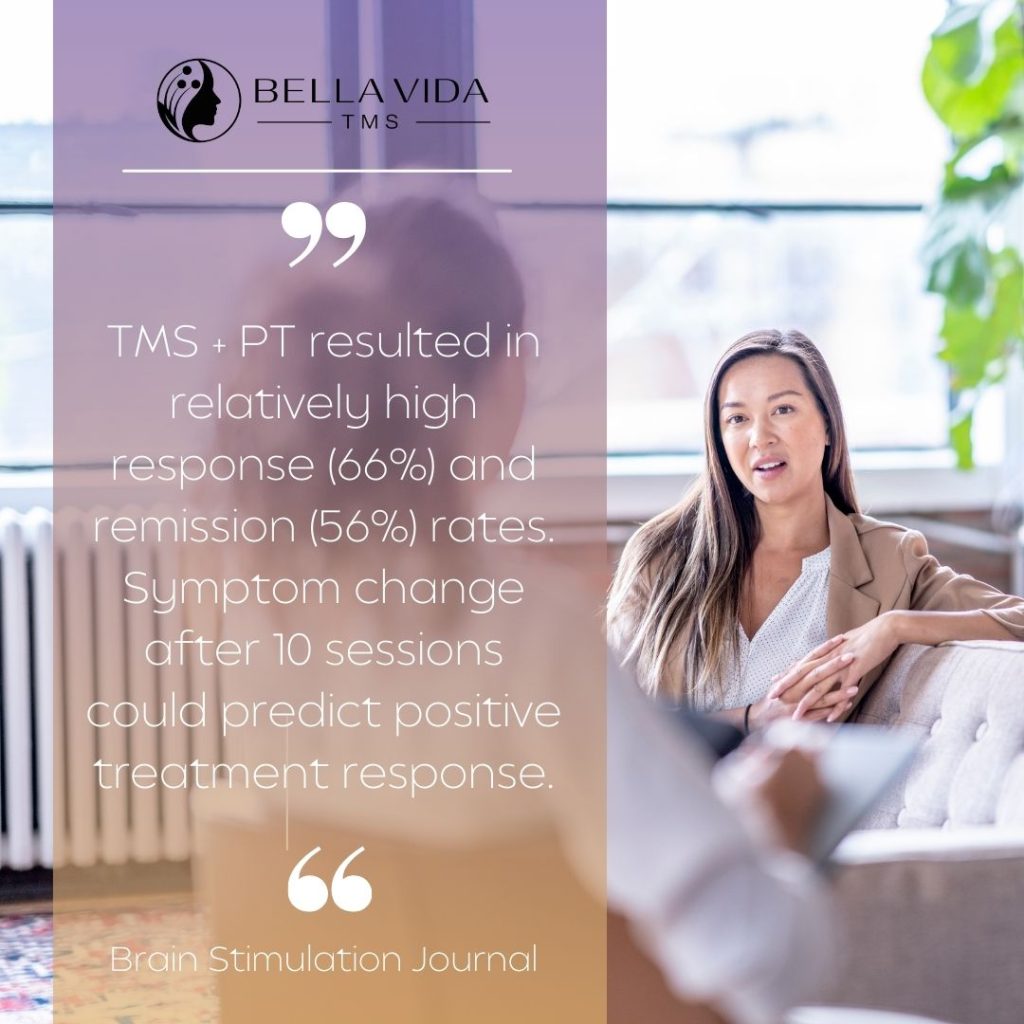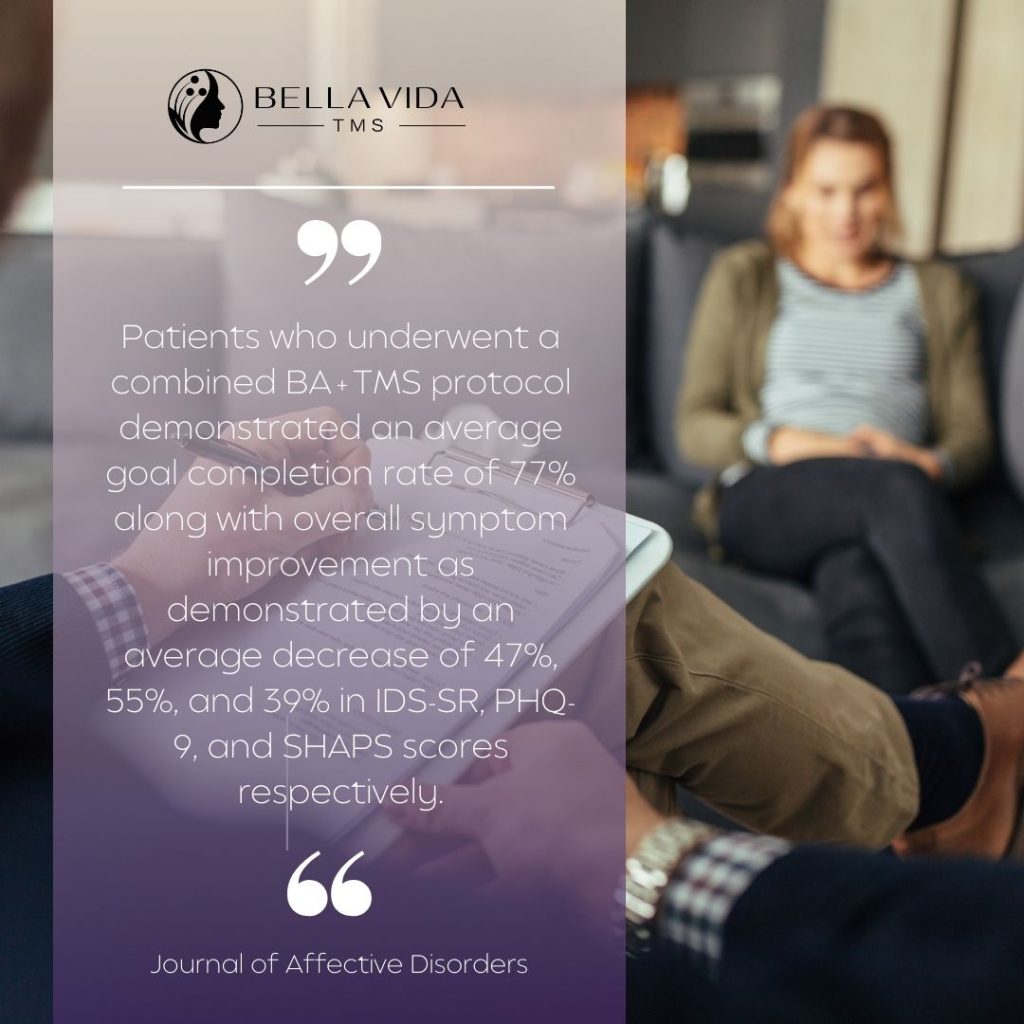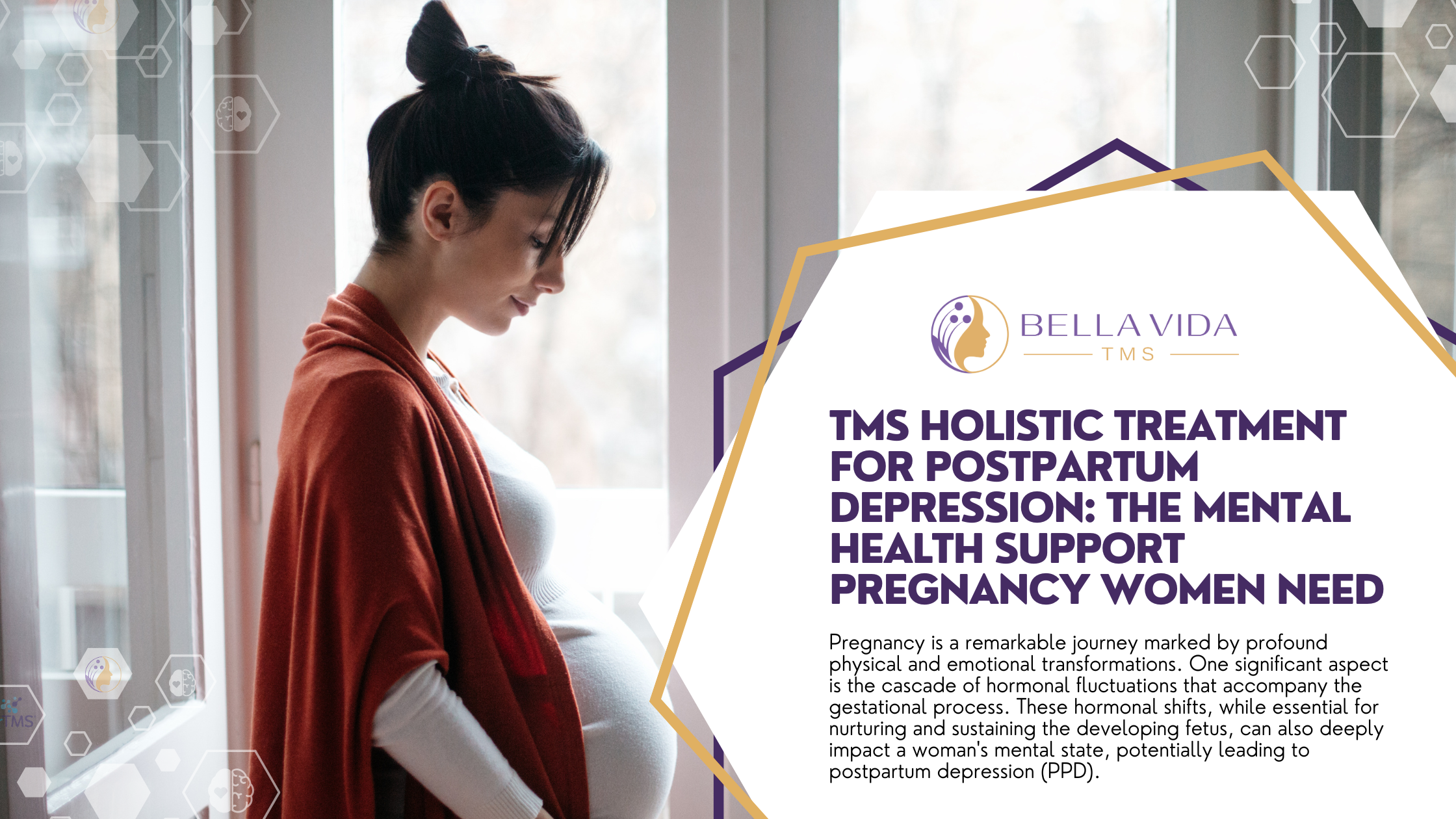Integrating Transcranial Magnetic Stimulation (TMS) with other therapeutic modalities is an emerging frontier in mental health treatment. This approach aims to amplify the benefits of TMS by addressing multiple aspects of mental health disorders concurrently.
PrTMS® therapy originates from the intriguing domains of neuroscience and neuroplasticity, wherein neuroplasticity denotes the brain’s remarkable ability to restructure and rewire itself by forming fresh neural connections and pathways. This remarkable trait serves as the cornerstone of PrTMS® therapy.
During a PrTMS® session, specialized equipment administers electromagnetic pulses to specific brain regions. These pulses are precisely calibrated to target neural pathways linked to social communication and behavior regulation, which are frequently compromised in individuals grappling with mental health issues.
These electromagnetic pulses ignite neural activity in these regions, fostering the formation of new connections and reinforcing existing ones. Through repetitive stimulation of these circuits, PrTMS® therapy facilitates the brain’s rewiring process, resulting in more streamlined and efficient pathways.
TMS and Cognitive Behavioral Therapy (CBT)
Combining TMS with Cognitive Behavioral Therapy (CBT) is gaining traction for its synergistic effects. CBT, a form of psychotherapy, helps patients develop healthier thinking patterns.
Cognitive Behavioral Therapy (CBT) employs a blend of cognitive and behavioral strategies to alleviate depression. Therapists often address depressive thought patterns that lead to inertia or self-destructive behaviors. The primary goal of CBT is to modify one’s emotional state, viewing this as the most effective means of influencing subsequent behavior.
Cognitive techniques within CBT encourage individuals to confront and rationalize negative thoughts, gradually diminishing their influence. Methods like cognitive restructuring facilitate an understanding of thought patterns, the underlying emotions or triggers, and the objective reality of the situation. Subsequently, therapists may offer a more rational or realistic perspective to mitigate cognitive distortions.
One prevalent cognitive distortion in depression is “mind reading,” wherein individuals presume to know the thoughts of others. By challenging such beliefs and other depressive cognitions, individuals can cultivate a healthier mindset and internal dialogue.
TMS and Pharmacotherapy
Integrating TMS with medication is another area of interest. This combination can be particularly beneficial for patients with treatment-resistant depression. Research in the American Journal of Psychiatry indicates that the concurrent use of TMS and antidepressants can lead to more robust and sustained improvements in depressive symptoms.
Gradually reducing antidepressant medication under the supervision of a healthcare professional is crucial for managing withdrawal symptoms and minimizing potential risks. This process, known as tapering, involves slowly decreasing the dosage over a period of weeks or months. Tapering allows the body to adjust to the decreasing levels of medication, reducing the likelihood of experiencing withdrawal symptoms such as nausea, dizziness, headaches, and mood swings.
Abruptly stopping antidepressants can lead to a range of adverse effects, including severe withdrawal symptoms and a relapse of depressive symptoms. The dangers of stopping antidepressants suddenly can be particularly pronounced for certain medications, such as selective serotonin reuptake inhibitors (SSRIs) and serotonin-norepinephrine reuptake inhibitors (SNRIs), which can cause discontinuation syndrome.

Discontinuation syndrome can manifest as flu-like symptoms, insomnia, anxiety, irritability, and electric shock sensations in the brain. In severe cases, it can lead to suicidal thoughts or behaviors. Additionally, abruptly stopping antidepressants can increase the risk of rebound depression or recurrence of the underlying condition.
Therefore, it’s essential for individuals who wish to discontinue antidepressant medication to do so under the guidance of a qualified healthcare professional. A doctor can create a personalized tapering plan based on the individual’s medical history, current dosage, and response to treatment, helping to mitigate the risks associated with stopping antidepressants completely.
If the goal is to no longer use medication for depression combining TMS with a gradual tapering of medication is possible.
TMS and Psychoeducation
Psychoeducation, which involves educating patients about their condition and ways to manage it, can enhance the effectiveness of TMS. By combining TMS with psychoeducational interventions, patients can gain a better understanding of their condition, which may improve treatment adherence and outcomes.
Jennifer Peterson, PMHNP-BC, is our Psychiatric Nurse Practitioner. One of Jennifer’s areas of expertise lies in the integration of psychotherapy with Transcranial Magnetic Stimulation (TMS). She offers new hope for those struggling with treatment-resistant mental health disorders. By combining the therapeutic benefits of psychotherapy with the innovative technology of TMS, Jennifer provides a comprehensive approach to addressing the complex nuances of mental illness.
By combining psychotherapy with TMS, Jennifer tailors treatment plans to address each patient’s unique needs, preferences, and goals. This integrative approach not only enhances the effectiveness of treatment but also promotes long-lasting recovery and improved quality of life.
Whether you’re seeking relief from persistent symptoms or exploring alternative avenues for mental health care, Jennifer Peterson, PMHNP-BC, offers compassionate support and innovative solutions to help you thrive. Experience the transformative power of combining psychotherapy with TMS and take the first step towards reclaiming your mental well-being today.
Get to know Jennifer Peterson, PMHNP-BC by checking out our video:
TMS and Mindfulness-Based Interventions
Incorporating mindfulness-based practices, such as mindfulness-based cognitive therapy (MBCT) or meditation, alongside TMS, has shown promise in enhancing mental well-being. These practices can help in reducing stress and improving mood, potentially augmenting the effects of TMS.
Mindfulness-Based Cognitive Therapy (MBCT) blends elements of cognitive-behavioral therapy for depression with the mindfulness-based stress reduction (MBSR) program pioneered by Kabat-Zinn (1990). MBCT aims to help individuals who have experienced recurrent major depression and are currently in remission to develop greater awareness of, and a different relationship with, their thoughts, emotions, and bodily sensations.
Through MBCT, patients learn to observe thoughts and feelings as transient occurrences in the mind rather than becoming entangled or accepting them as accurate reflections of reality. The therapy equips individuals with skills to disengage from ingrained (“automatic”) dysfunctional cognitive patterns, particularly those associated with depression such as rumination, thereby reducing the risk of relapse and recurrence of depressive episodes.
Research Studies Combining TMS with Psychotherapy Modalities

A group of 196 patients diagnosed with Major Depressive Disorder (MDD) underwent a treatment regimen involving at least 10 sessions of concurrent transcranial magnetic stimulation (TMS) and psychotherapy (PT).
The TMS procedure targeted the left dorsolateral prefrontal cortex (DLPFC) at a frequency of either 10 Hz or the right DLPFC at 1 Hz. The psychotherapy component adhered to cognitive behavioral therapy (CBT) principles.
Symptom assessment using the Beck Depression Inventory (BDI) occurred every fifth session until the completion of treatment, with additional evaluations conducted at a 6-month follow-up.
Analysis included comparisons between patients who responded favorably to treatment and those who did not, as well as between individuals receiving the 10 Hz and 1 Hz TMS protocols.
The combination of TMS and PT yielded positive outcomes, with a 66% response rate and a 56% remission rate observed by the end of treatment, sustaining a 60% remission rate at the follow-up. These response and remission rates surpass those reported in previous randomized controlled trials (RCTs). Notably, early symptom improvement, noted by session 10, strongly correlated with treatment response, suggesting its potential as an indicator for the continuation of TMS + PT therapy. Despite these promising results from a sizable naturalistic study, further investigations employing standardized methodologies are necessary to ascertain the unique impact of TMS + PT.
In another study conducted in 2018, they integrated Behavioral Activation (BA) into a standard 6-week Transcranial Magnetic Stimulation (TMS) regimen, which was then piloted with 11 consecutively treated outpatients suffering from treatment-resistant depression (TRD).
Behavioral Activation (BA) is based on behaviorism. This is a branch of psychology that focuses on how someone’s environment shapes their actions and, therefore, their mental health. The idea behind behavioral activation is that by deliberately practicing certain behaviors, people can “activate” a positive emotional state.
BA sessions, lasting 5–10 minutes each, were conducted daily prior to commencing TMS. The level of patient engagement in BA was assessed by monitoring the establishment and accomplishment of “goals” set between sessions throughout the TMS treatment course. Symptomatic improvement was evaluated using the Inventory of Depressive Symptoms (IDS-SR), the 9-item Patient Health Questionnaire (PHQ-9), and the Snaith–Hamilton Pleasure Scale (SHAPS).

Patients undergoing the combined BA + TMS protocol exhibited an average goal completion rate of 77%, alongside notable overall symptom improvement, evidenced by average reductions of 47%, 55%, and 39% in IDS-SR, PHQ-9, and SHAPS scores, respectively. The integration of BA into the daily TMS procedure proved to be straightforward and seamlessly incorporated into patients’ routines.
The combination of TMS with other therapeutic modalities represents a comprehensive approach to mental health treatment, potentially offering enhanced outcomes for patients. As research continues to evolve in this area, it holds the promise of more effective, personalized treatment strategies for various psychiatric and neurological conditions.
External Reference links
- Choosing Therapy – CBT for Depression: How It Works, Examples, & Effectiveness
- NIH –Mindfulness-Based Cognitive Therapy
- Science Direct – Brain Stimulation Journal – Simultaneous rTMS and psychotherapy in major depressive disorder: Clinical outcomes and predictors from a large naturalistic study
- Science Direct – Journal of Affective Disorders – Behavioral activation therapy during transcranial magnetic stimulation for major depressive disorder



